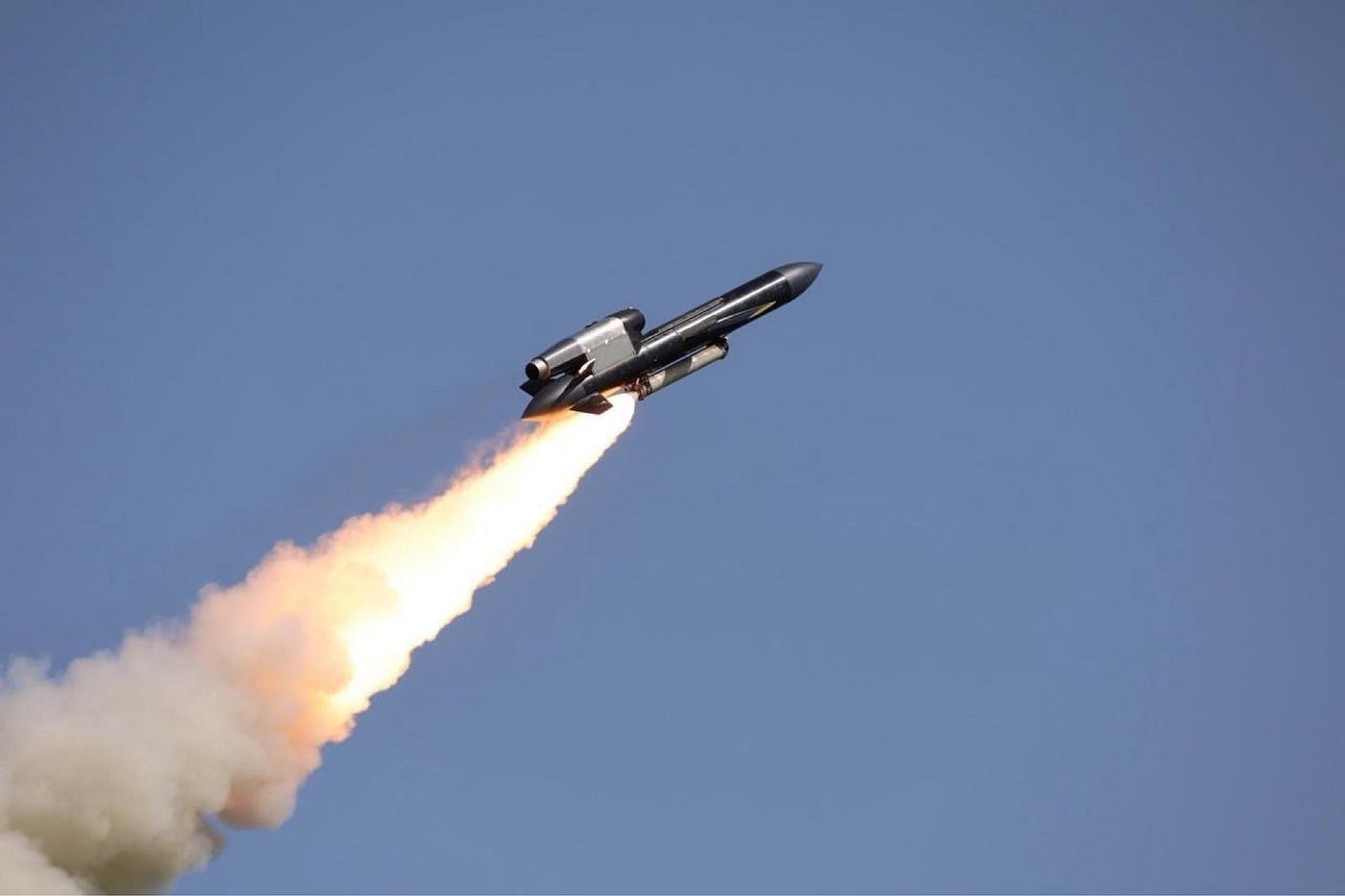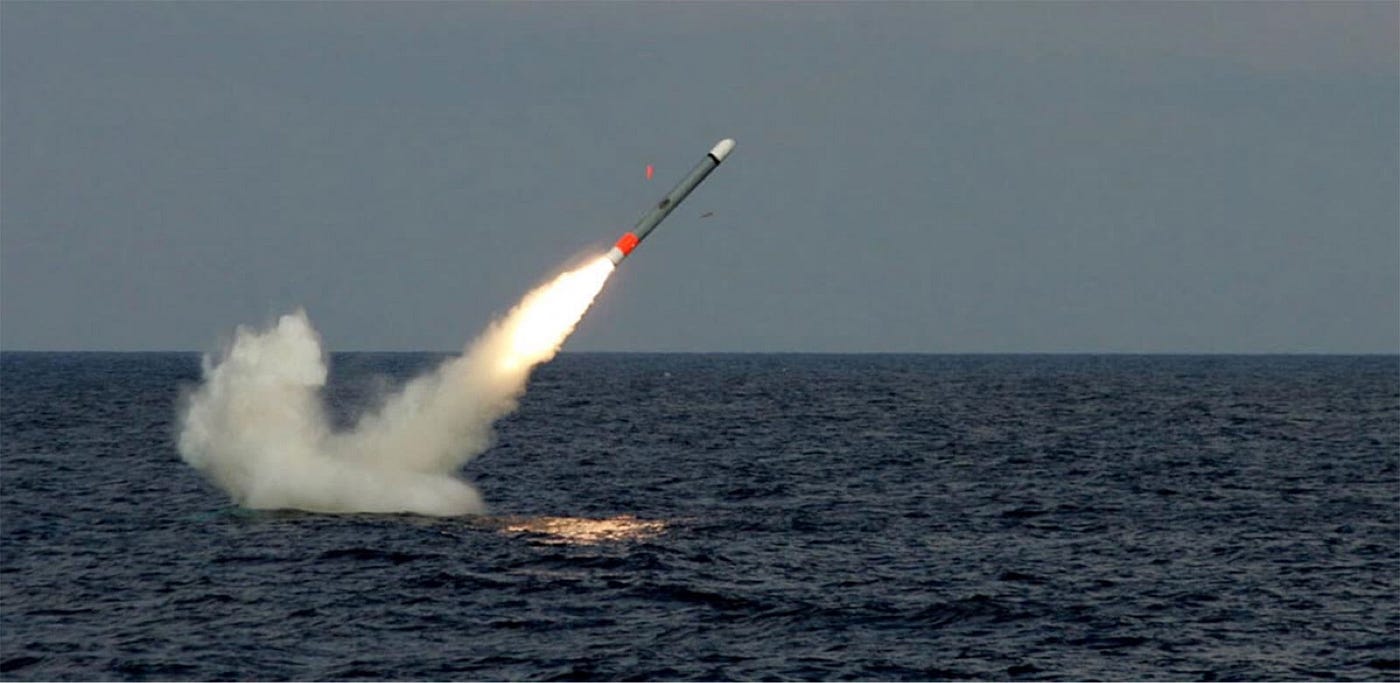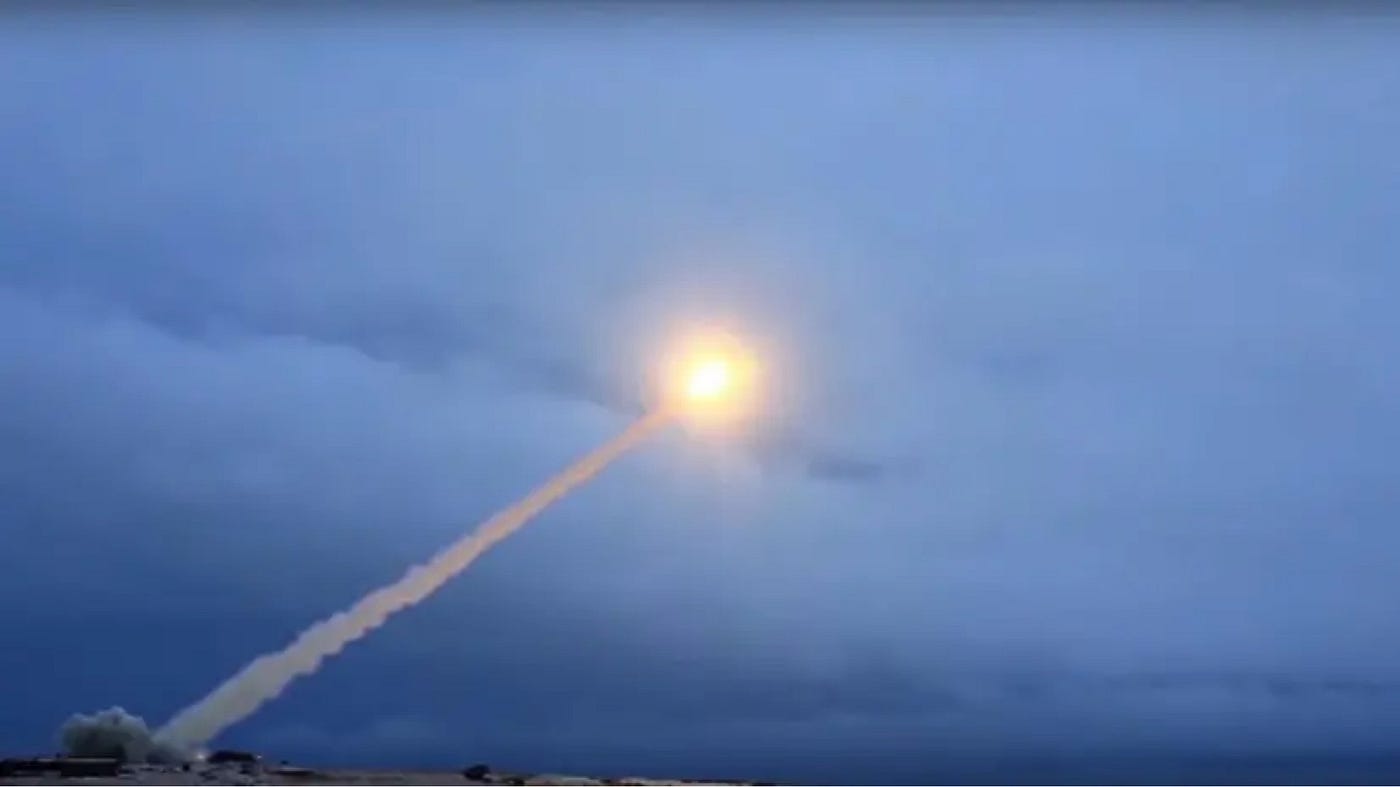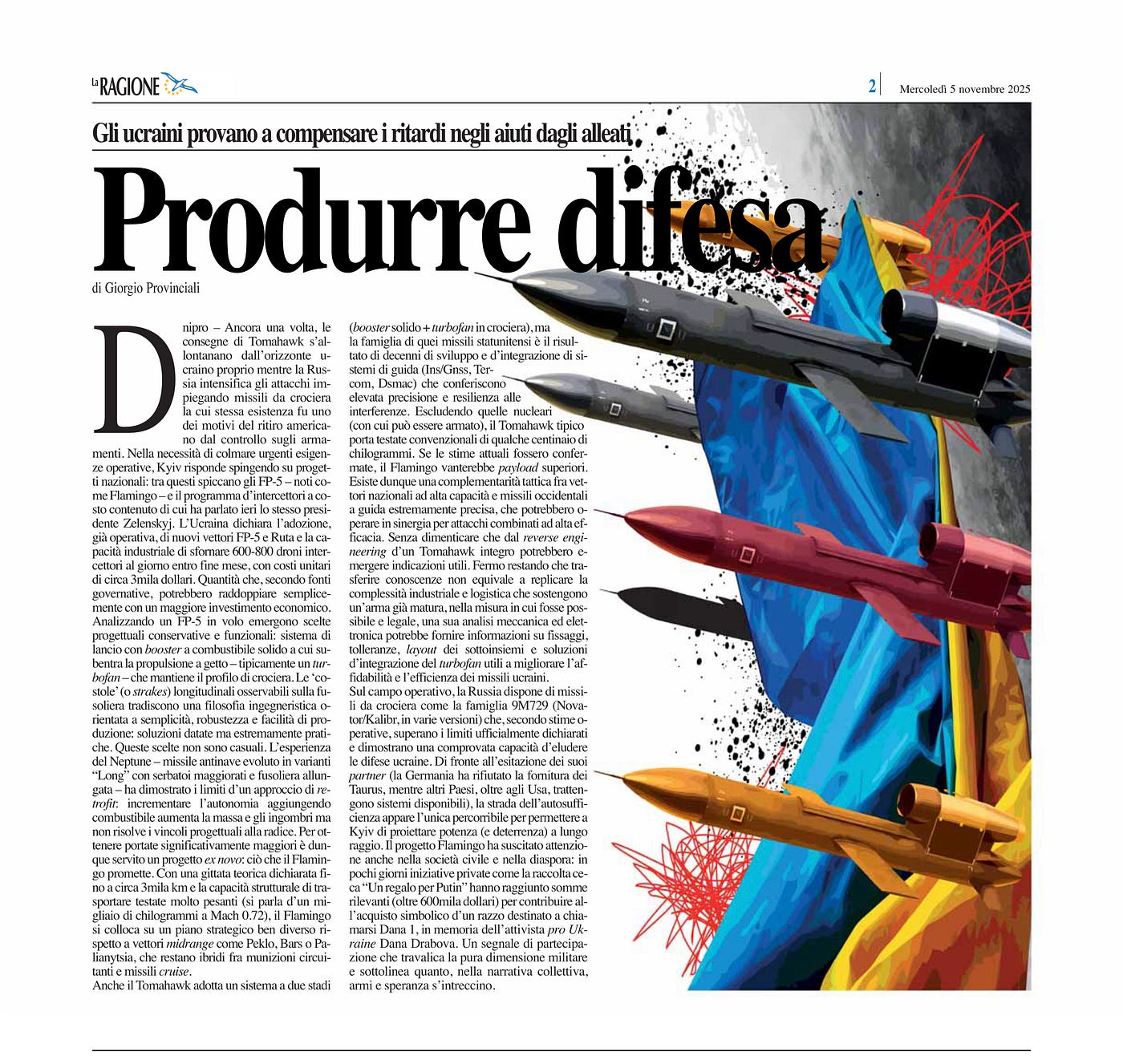A Gift For Putin
By: Giorgio Provinciali
Live from Ukraine ????????
WE JUST LAUNCHED A NEW FUNDRAISING CAMPAIGN TOURCHASE DRONE DETECTORS
Please, support it ????????????????
Dnipro Once again, Tomahawk deliveries are fading from Ukraines horizon just as Russia ramps up its attacks using cruise missiles whose very existence was one of the reasons for the US withdrawal from arms control. To address urgent operational needs, Kyiv is responding by prioritizing domestic projects, including the FP-5, known as Flamingo, and the low-cost interceptor program, which President Zelensky discussed yesterday.
Ukraine has announced the immediate operational deployment of new FP-5 and Ruta missiles, along with the industrial capacity to produce 600800 interceptor drones daily by the end of the month, costing about $3,000 each. According to government officials, these numbers could double with additional financial investment.

Examiningan FP-5 in flight reveals conservative and functional design choices: a launch system with solid-fuel boosters replaced by jet propulsion usually a turbofan that maintains the cruise profile. The longitudinal strakes visible on the fuselage betrayan engineering philosophy focused on simplicity, robustness, and ease of production: outdated but highly practical solutions.
These choices are not random. The experience with the Neptune an anti-ship missile evolved into Long variants with larger fuel tanks and a longer fuselage has demonstratedthe limits of a retrofit approach: increasing range by adding fuel increases mass and size but does not address the underlying design constraints. Achieving significantly greater ranges, therefore, required a completely new design: precisely what the Flamingo offers.

With a declared theoretical range of up to approximately 3,000 km and the structural capacity to carry very heavy warheads (estimated at around 1,000 kilograms at Mach 0.72), the Flamingo occupies a very different strategic position from mid-range solutions likePeklo, Bars, or Palianytsia, which remain hybrids of circling munitions and cruise missiles.
The Tomahawk also uses a two-stage system (solid booster plus turbofan during cruise), but the family of these US missiles results from decades of development and integration of guidance systems (INS/GNSS, TERCOM, DSMAC) that deliver high precision and resistance to interference. Excluding nuclear warheads (which it can be armed with),the typical Tomahawk carries conventional warheads weighing a few hundred kilograms; if current estimates are accurate,the Flamingo would carry a larger payload. There is therefore a tactical complementarity between high-capacity national missiles and highly precise Western guided ones, which could operate synergistically for very effective combined strikes. It is also worth noting thatreverse engineering a complete Tomahawk could provide valuable insights. While transferring knowledge doesnt mean replicating the full industrial and logistical complexity of an advanced weapon, mechanical and electronic analysis, as far as legally and practically possible, might reveal details about mountings, tolerances, subassembly layouts, and turbofan integration solutions that could improve the reliability and efficiency of Ukrainian missiles.

In the operational theater,Russia has cruise missiles like the 9M729 family (Novator/Kalibr, in various versions), which, according to operational estimates, surpass officially declared limits and demonstrate a proven ability to evade Ukrainian defenses.
With hesitation from its allies (Germany has refused to supply Taurus rockets, while other countries, besides the US, are withholding available systems),self-reliance appears to be the only practical option for Kyiv to project power (and deterrence) over the long term. The Flamingo project has also attracted attention among civil society and the diaspora: in just a few days, private initiatives such as the Czech fundraiserA Gift for Putinhave raised significant funds (over $600,000) to contribute to the symbolic purchase of a rocket to be named DANA 1, in honor of pro-Ukraine activist Dana Drabova. This display of participation goes beyond the purely military aspect and highlights how, in the collective narrative, weapons and hope are intertwined.

一份送给普京的礼物
作者:Giorgio Provinciali
乌克兰前线报道????????
我们刚刚启动了一场新的募捐活动购买无人机探测器
请支持我们????????????????
????????帮助我们购买无人机探测器????????????
过去三年来,我们一直在乌克兰战争的前线进行自由报道,自从大规模冲突爆发以来
https://www.paypal.com/pools/c/9jbDXjGiRu
第聂伯(Dnipro)就在俄罗斯使用巡航导弹加强攻击力度之际,战斧导弹的交付又一次从乌克兰的视野中消退,而这些导弹的存在正是美国退出军控的原因之一。为应对紧迫的行动需求,基辅正优先推进国内项目,包括被称为火烈鸟的FP-5以及低成本拦截器计划,泽连斯基总统昨天讨论了这些项目。
乌克兰已宣布立即部署使用新型的火烈鸟和路塔导弹,以及到本月底具备每天生产600-800枚拦截无人机的工业能力,这些无人机成本约3000美元每枚。根据政府官员的说法,若投入更多资金,这些数字可能会翻倍。
(图:FP-5火烈鸟图片来源:一份送给普京的礼物)
观察FP-5的飞行状态,显示其设计偏向保守且实用:发射系统的固体燃料助推器被喷气推进所取代通常为涡扇风扇以维持巡航姿态。机身上的纵向翼条标志着一种专注于简洁、坚固性和易于生产的工程理念:虽然过时但非常实用的解决方案。
这些设计选择并非随机。海王星一种反舰导弹演变而来的长变体,燃料箱更大,机身更长的经验表明了改造方法的局限性:增加燃料以延长射程,会增加质量和尺寸,但无法解决根本的设计限制。因此,要实现显著更长的射程,就必须采用全新设计:正是火烈鸟所提供的。
(图:战斧导弹图片来源:RTX)
火烈鸟的理论射程约为3000公里,且具有携带非常重弹头的结构能力(估计在0.72马赫时约为1000公斤)。它的战略地位与中程武器如佩克洛、巴尔斯或帕利扬蒂娅截然不同,这些仍然是巡航导弹与循环弹药的混合体。
战斧也采用两级系统(固体助推器加巡航阶段的涡扇风扇),但这些美国导弹家族是几十年来开发和集成制导系统(INS/GNSS、TERCOM、DSMAC)的结果,具有高精度和抗干扰能力。除了核弹头(但它也可以装载核弹头),战斧一般携带数百公斤的常规弹头;如果目前的估计准确,火烈鸟可能携带更大的有效载荷。因此,高容量的国产导弹与高精度的西方制导导弹具有战术互补性,二者协同作战能实现非常高效的联合打击。同样值得注意的是,完整的战斧逆向工程可以提供有价值的见解。尽管知识转让并不意味着复制先进武器的全部工业和后勤技术复杂性,但在法律和实际允许的范围内,通过机械和电子分析,有望揭示安装方式、公差、子组件布局以及涡扇发动机集成解决方案的详细信息,从而提升乌克兰导弹的可靠性和效率。
(图:2018年7月19日,俄罗斯国防部在其官方YouTube频道公布的一段视频截图,显示俄罗斯布列斯特尼克核动力巡航导弹从俄罗斯境内发射图片来源:图片来源:EPA俄罗斯国防部新闻处)
在战场上,俄罗斯拥有9M729系列巡航导弹(诺瓦托尔/卡丽布尔系列的多个版本),据作战估算,其射程已超出官方宣布的限制,并展示了躲避乌克兰防御的成熟能力。
由于盟国的犹豫不决(德国拒绝供应金牛座火箭,而除美国外其他国家正在扣留可用系统),自力更生成为基辅实现长期行动力(和威慑力)的唯一有效选项。火烈鸟项目也在民间社会和侨民中引起关注:在短短几天内,捷克的筹款项目为普京献礼等私人募集基金就筹集了超过60万美元,用于象征性地购买一枚命名为DANA 1的导弹,以纪念支持乌克兰的活动家达娜德拉博娃。这种参与超越了纯粹的军事意义,更凸显了在集体叙事中,武器与希望紧密相连。
(图:这是我为意大利报纸La Ragione所写的专栏版权所有,Giorgio Provinciali)




